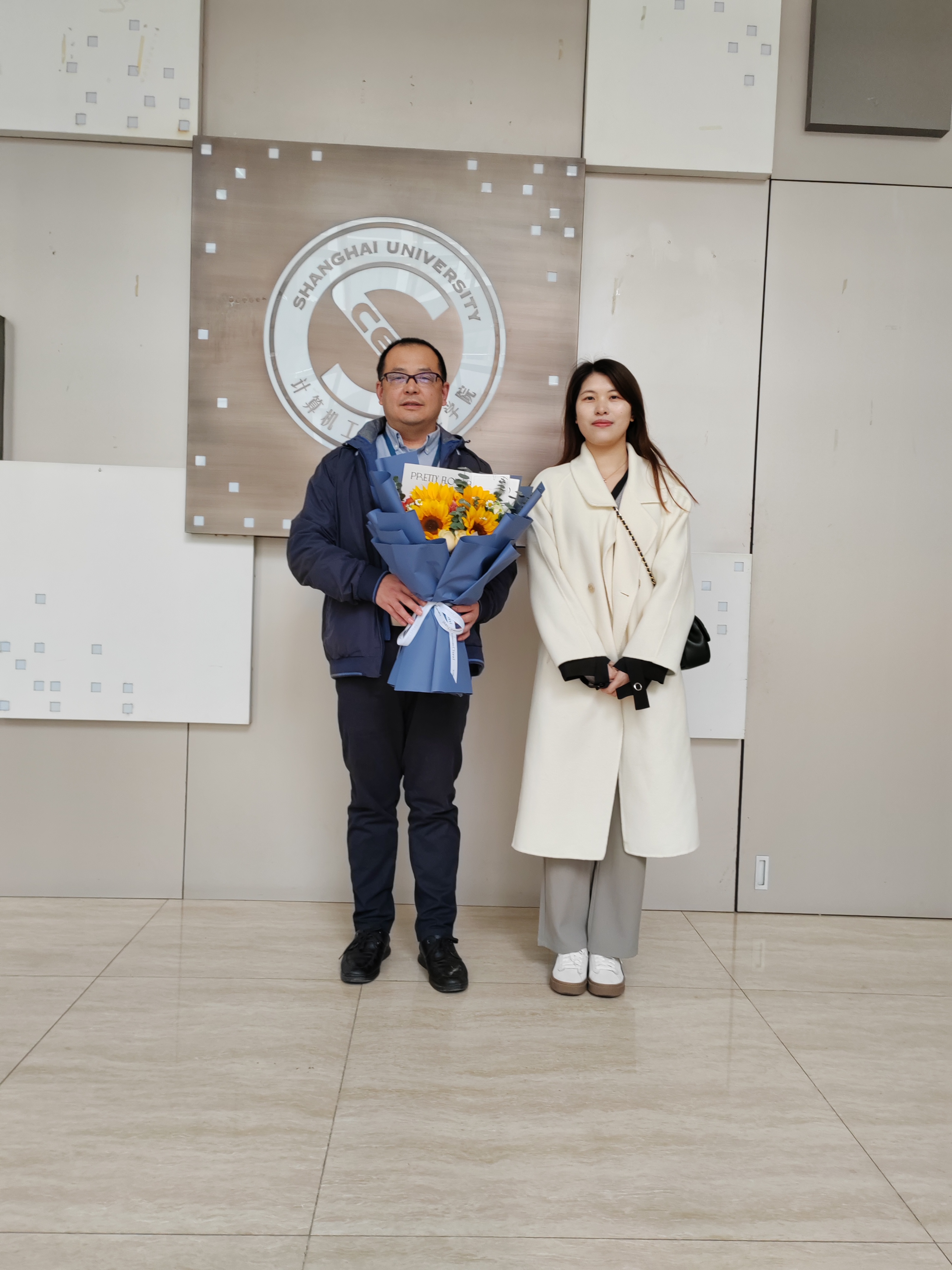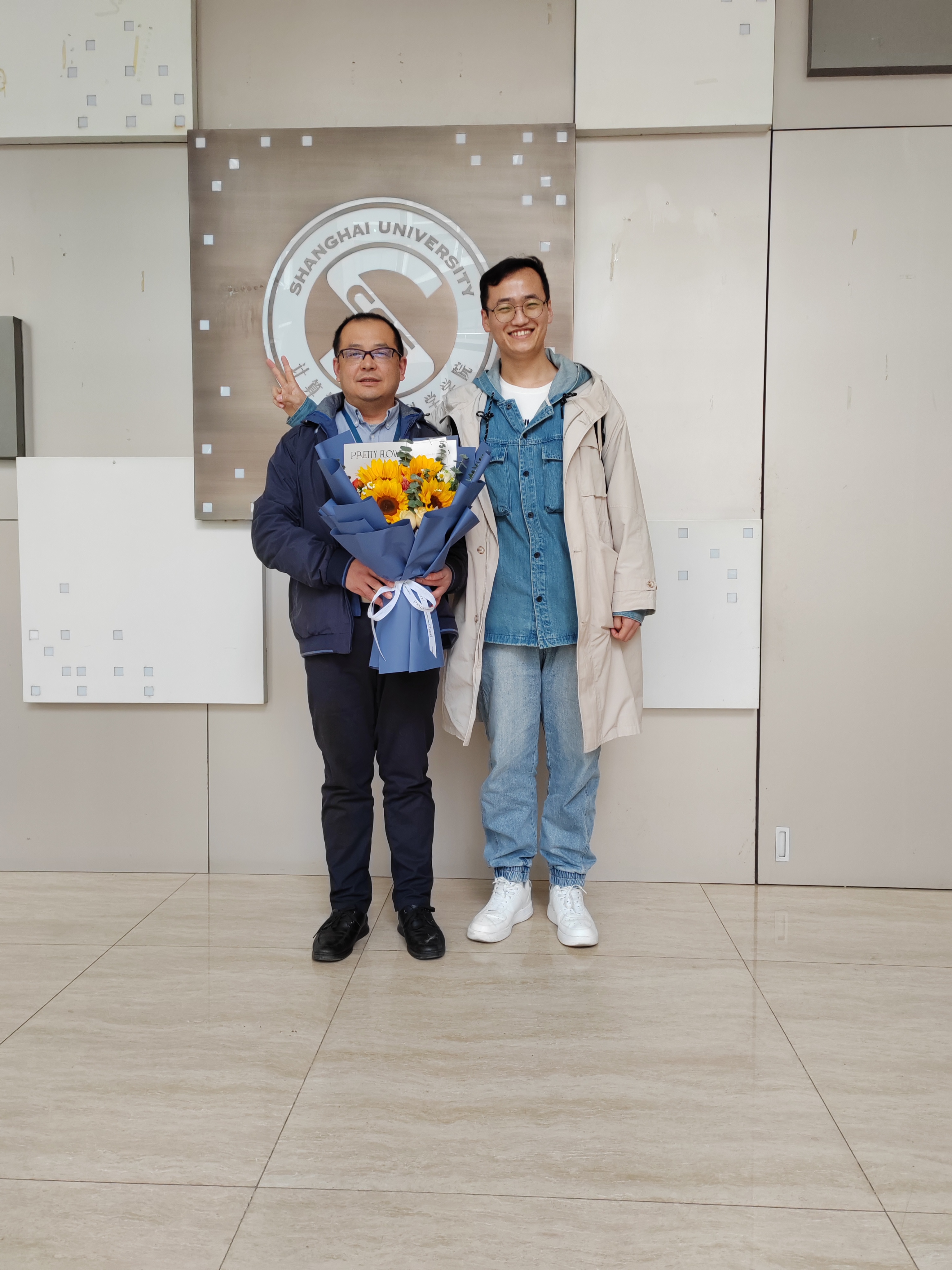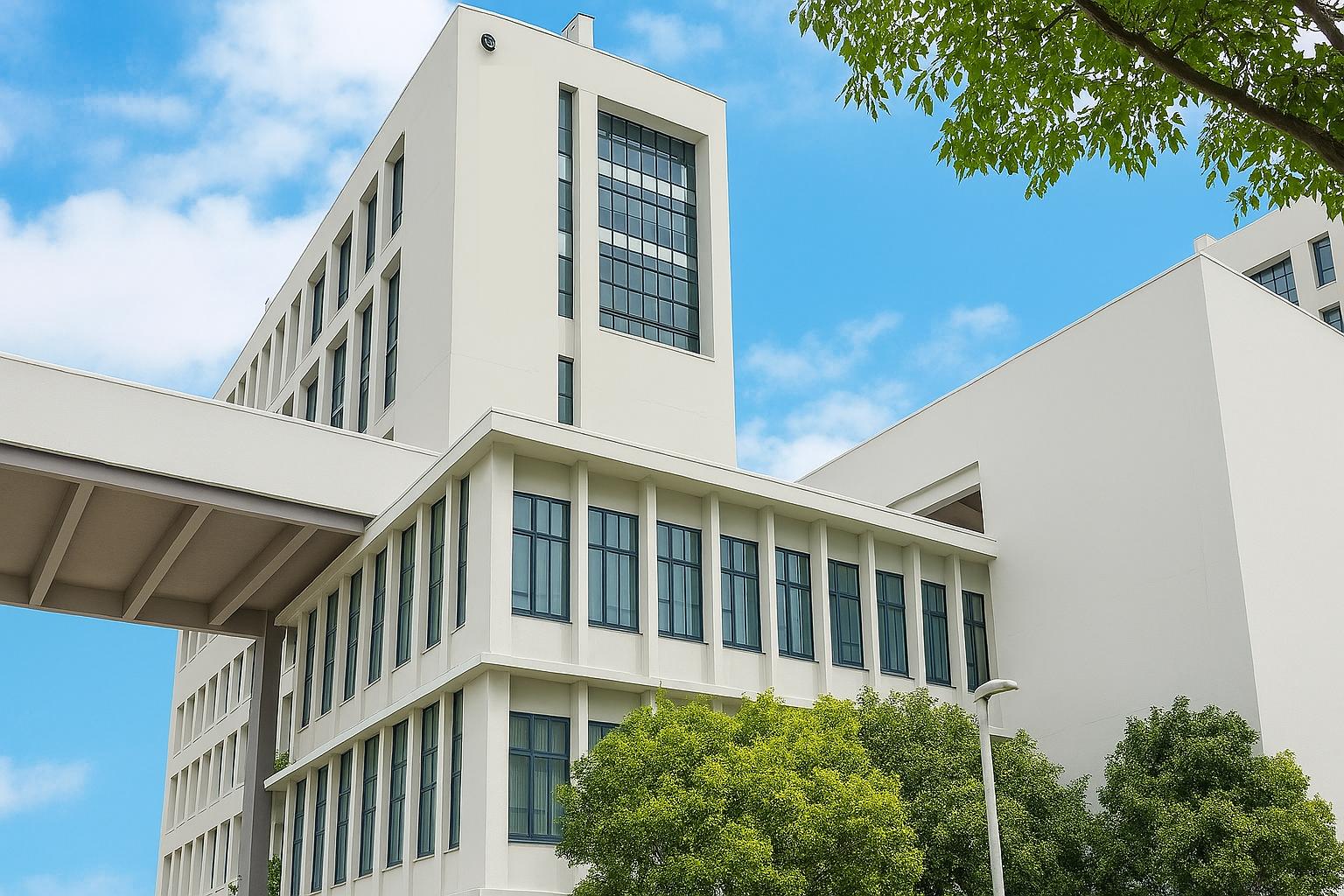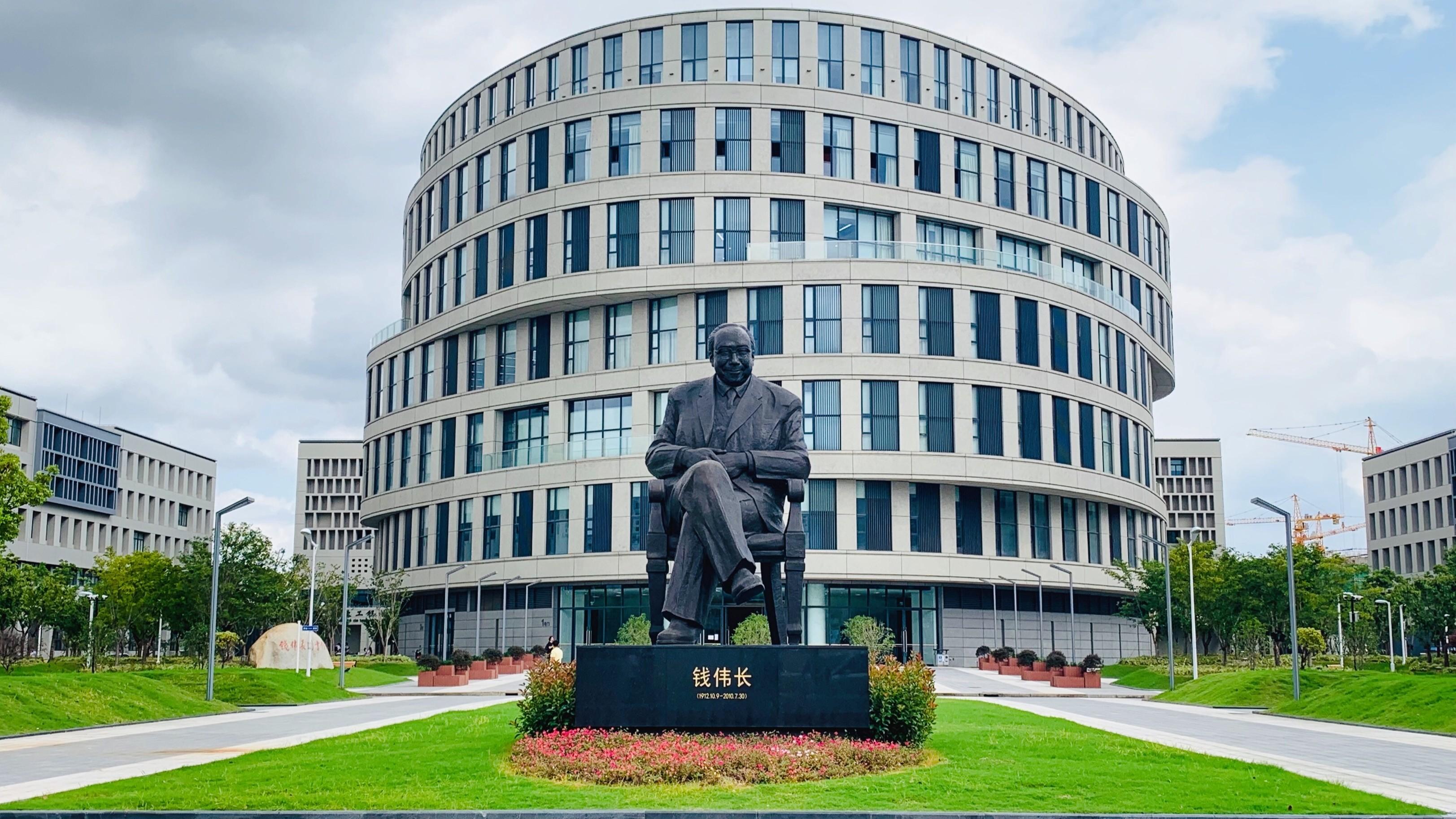Our team published the paper “Data augmentation in material images using the improved HP-VAE-GAN” in the international journal “Computational Materials Science”. The School of Computer Engineering and Science of Shanghai University was the first affiliation, Yuexing Han was the first author, Yuhong Liu was the second author, and Qiaochuan Chen was the corresponding author.

Since the rapid development of computer vision relies heavily on large-scale labeled data and high-performance computing equipment, therefore, image recognition in small sample datasets faces several challenges, such as difficult to implement model training. In the field of materials research, the cost of collecting image data is relatively high. In order to solve the problem of insufficient image samples in material research, an improved HP-VAE-GAN is proposed to generate material images to achieve data augmentation.
HP-VAE-GAN is a single sample generation model that consists of Patch-VAE and Patch-GAN. The improved HP-VAE-GAN introduces the attention mechanism into model. By adding CBAM (Convolutional Block Attention Module) to the encoder of Patch-VAE, the feature extraction and representation capabilities of the network are further improved. Use this model to train a single image, and then generate a certain number of samples to achieve the expansion of the training set.
For the classification of ultrahigh carbon steel microstructure images, experiments show that the accuracy of classification model (MobileNet, ResNet50 and VGG16) trained with real images plus generated images is improved obviously. In addition, the effectiveness of the improved HP-VAE-GAN is verified by experiments on texture images similar to material images.
Essay: Data augmentation in material images using the improved HP-VAE-GAN
Code: https://github.com/han-yuexing/Improved-HP-VAE-GAN
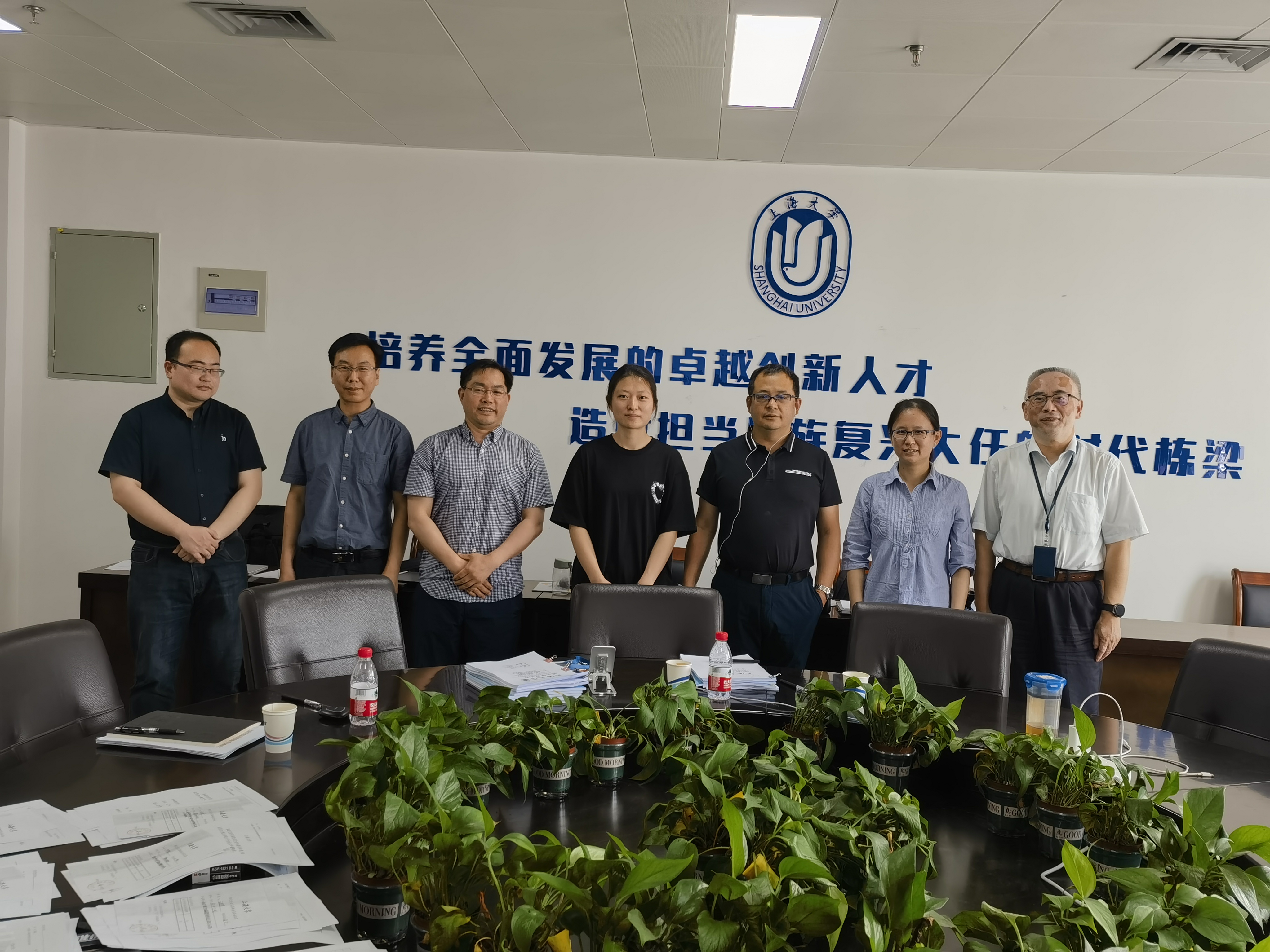
Our team published a paper titled “A pseudo-labeling based weakly supervised segmentation method for few-shot texture images” in the international journal “Expert Systems With Applications” (IF: 8.5, Computer Science, Q1 TOP). The School of Computer Engineering and Science at Shanghai University is the first affiliation, Han Yuexing is the first author, Li Ruiqi is the second author, and Han Yuexing and Chen Qiaochuan are the corresponding authors.
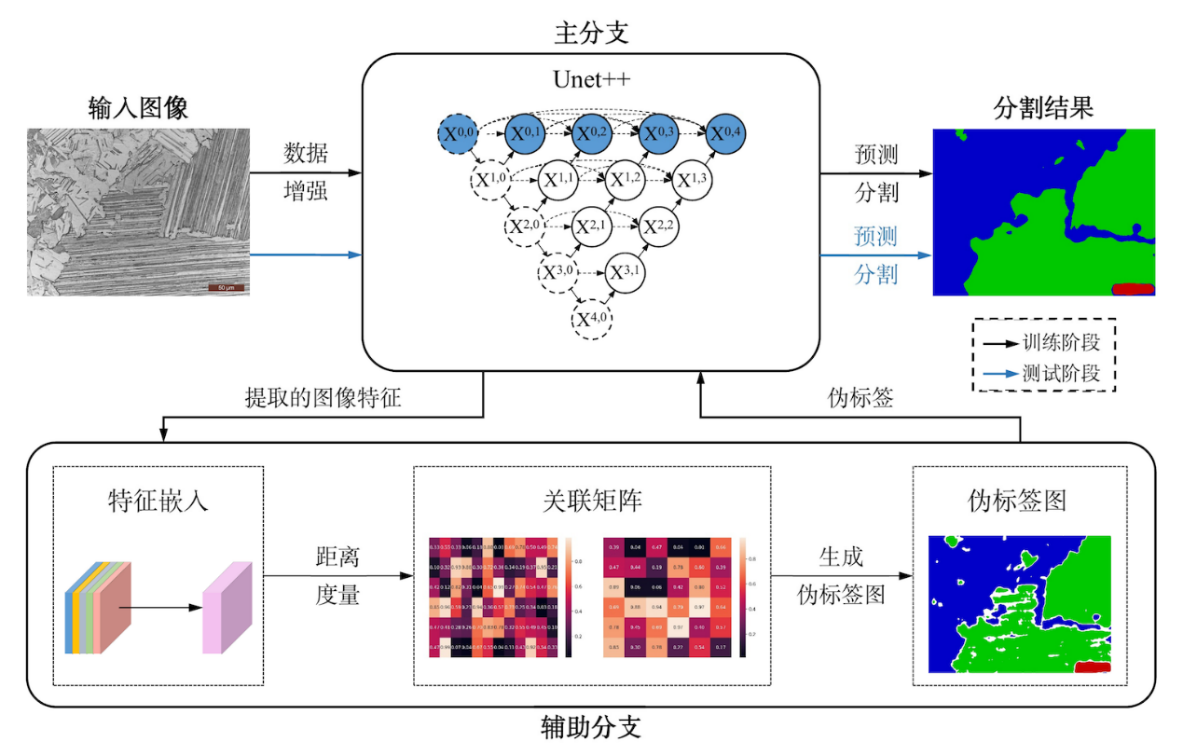
Deep learning-based segmentation of material microstructure images faces challenges such as scarce samples, annotation difficulty, and model generalization. In material images with complex textures, accurately delineating boundaries between different phases is often challenging. These issues have resulted in poor performance of existing deep learning networks for segmenting material microstructure images. To address these problems, this paper proposes a weakly supervised pseudo-labeling texture segmentation (PTS) network based on line annotation. Compared to full annotation, line annotation only requires labeling a small number of pixels with clear categories, significantly reducing the domain knowledge required for annotation. However, line annotation covers a very small number of pixels, making it difficult to provide sufficient supervision for complex neural networks. Therefore, the PTS network generates pseudo-labels during the training phase to obtain more available supervision.
As shown in the figure above, the PTS network adopts a dual-branch structure consisting of a main branch and an auxiliary branch. The main branch is used for feature extraction and segmentation prediction, while the auxiliary branch generates pseudo-labels to assist the training of the main branch, thus achieving dual supervision (line annotation and pseudo-labels) of the segmentation prediction results of the main branch. During the testing phase, only the main branch is used to predict the segmentation results of the images. The PTS network achieves the training of a generalizable image segmentation model for complex textured material images based on one to two line annotations and exhibits universality. The figure below shows the segmentation results based on line annotation for different models on the titanium alloy dataset.

After applying the t-SNE method to reduce the dimensionality of the features extracted from the PTS network and the Unet++ network separately, we obtain the feature distributions shown in Figure 3. By comparing the feature distributions of the PTS network and the Unet++ network, it can be observed that the different class features in the Unet++ network are more confounded compared to the PTS network. In the figure below, the distributions of blue and orange feature points in the Unet++ network overlap with each other, which may limit the final segmentation results of the Unet++ network. In contrast, the feature distribution of the PTS network exhibits clearer boundaries between different classes, which aids in better predictive segmentation.
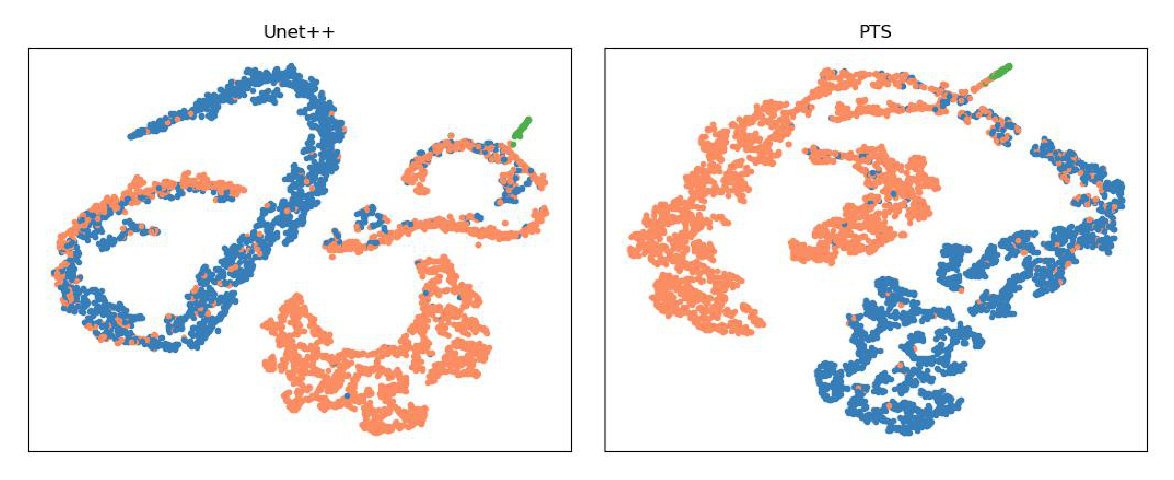
Our code and paper are both publicly available at: https://github.com/han-yuexing/Scribble_Segmentation

Our team has published a paper titled “A literature-mining method of integrating text and table extraction for materials science publications” in the international journal “Computational Materials Science” (IF: 3.3000). The first affiliation of this paper is the School of Computer Engineering and Science, Shanghai University, with Associate Professor Zhang Rui as the first author and Zhang Jiawang as the second author. Associate Professor Han Yuexing is the corresponding author.
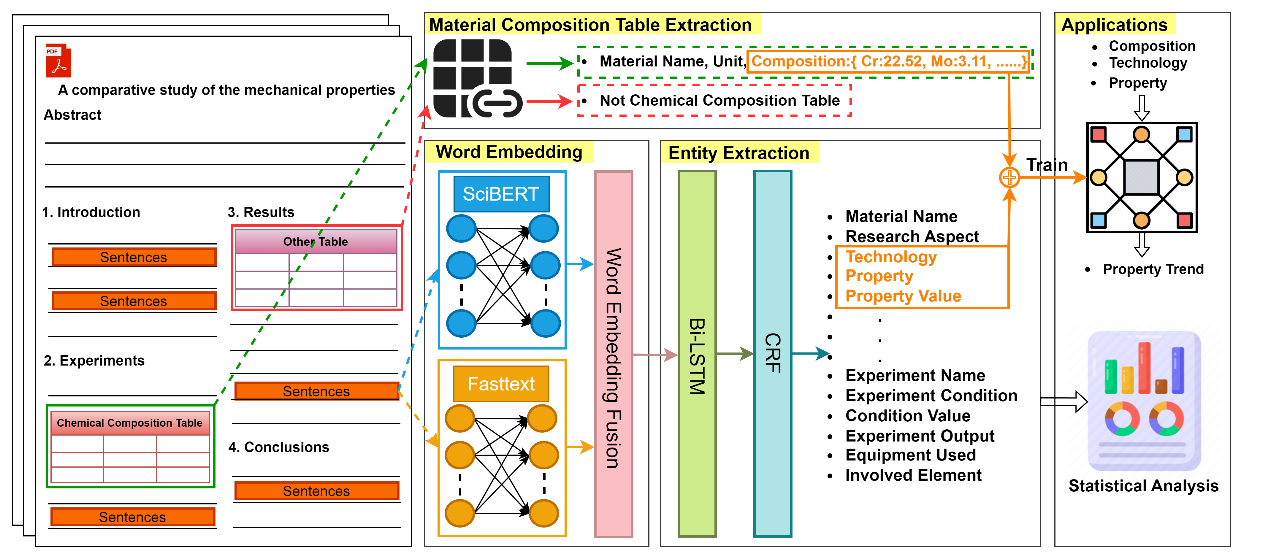
Scientific literature serves as an important means of showcasing research outcomes. In this study, we propose a large-scale information processing method for materials science literature, which involves extracting both textual and tabular information and conducting analysis. Firstly, we propose a material text named entity recognition model that combines general dynamic word vectors with domain-specific static word vectors. Secondly, we present an efficient and accurate method for recognizing and extracting information from image-based tables, specifically extracting material names, units, and components from composition tables. Finally, we utilize the extracted components, processes, properties, and property changes from both text and tables to predict the performance of corrosion resistance, ductility, strength, and hardness using machine learning techniques. This paper demonstrates the methodology using stainless steel as a demonstration material, mining 2.36 million entities and 7,970 compositions from 11,058 stainless steel literature, and predicting four types of performance changes. The proposed method enables large-scale knowledge extraction from materials science literature, and the extracted results can be utilized by relevant researchers to facilitate material performance improvement efforts.

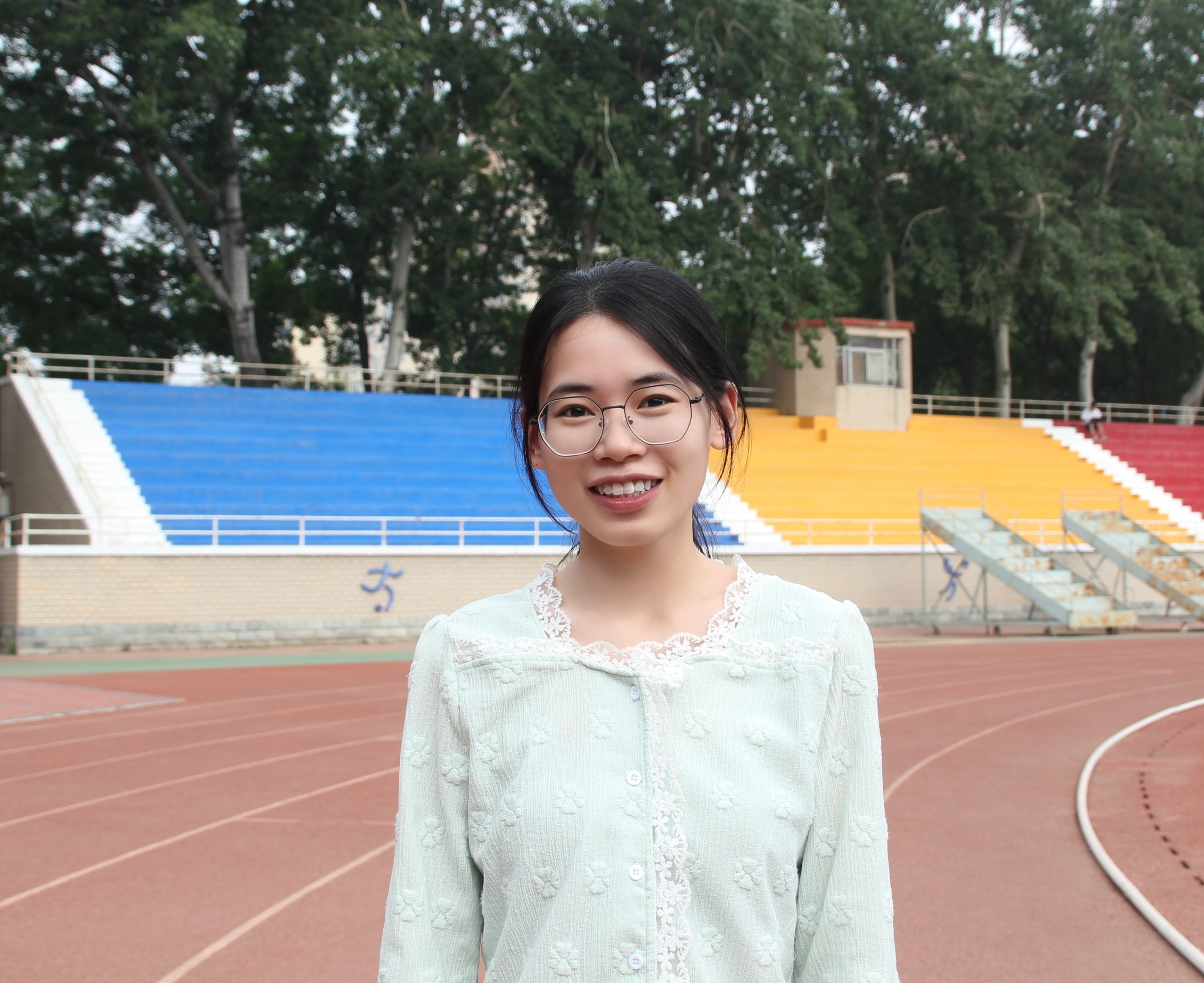
Huang Zhiyi obtained her undergraduate degree in Computer Science and Technology from Capital Normal University and is currently pursuing a master's degree in Computer Science and Technology at Shanghai University. She has an outgoing and optimistic personality, with stable emotions and a friendly demeanor. She enjoys watching movies, anime, and listening to music, and she is open to embracing new experiences. With a proactive and enterprising mindset, she approaches tasks with careful planning, aiming to have control over her endeavors. She looks forward to embarking on a new journey at Shanghai University, studying diligently, staying physically active, and continuing to progress.
Ge Jiahao is a male student who pursued his undergraduate degree in the Department of Computer Science and Technology at Shanghai University. Currently, he is continuing his studies at the same institution as a graduate student. He has an introverted personality, is friendly towards others, and possesses a curious nature with a love for life. He has a wide range of interests, including listening to music, photography, and swimming. He hopes to continuously enhance his professional skills, acquire knowledge, and continue to grow during his graduate studies.
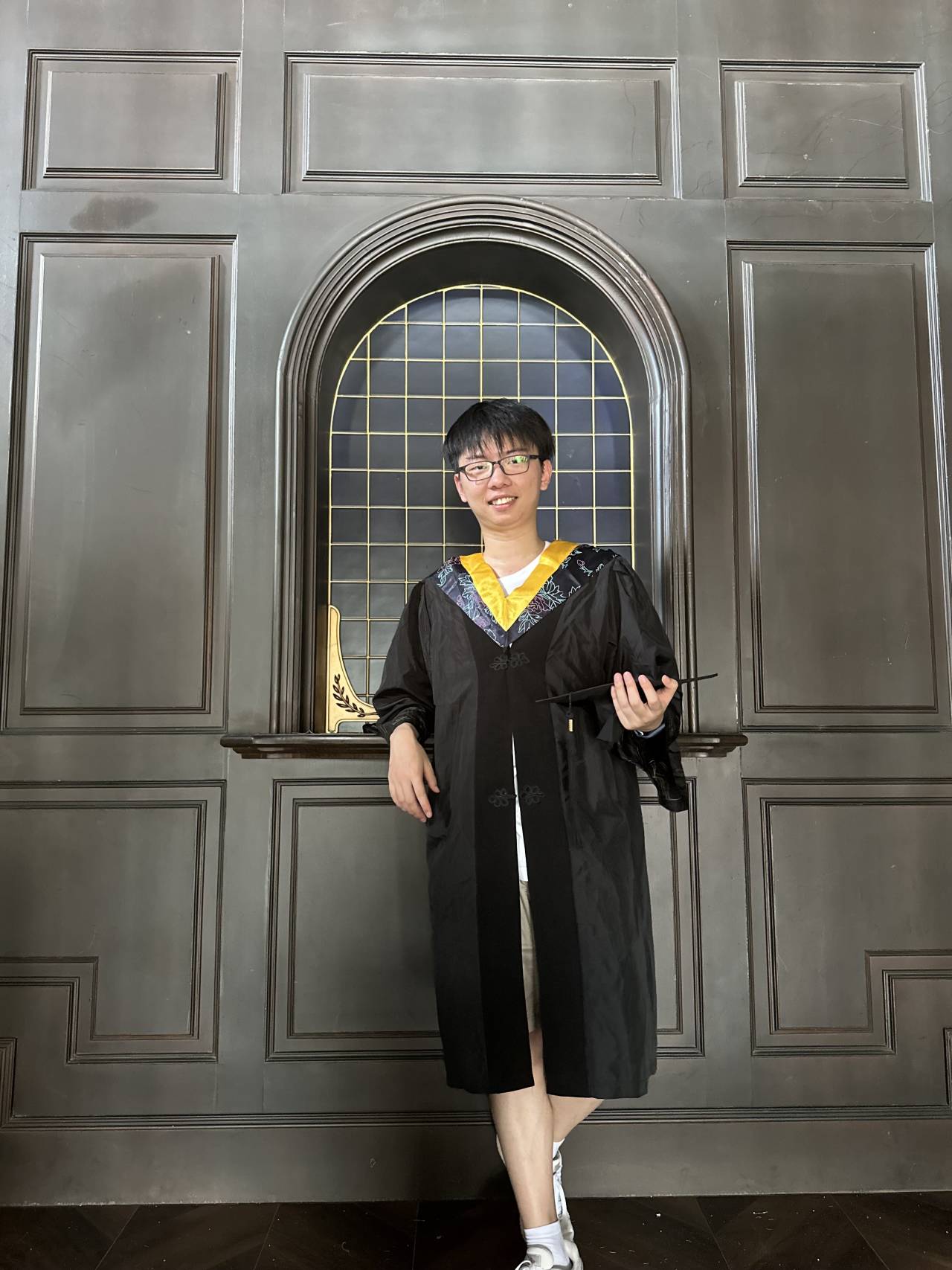
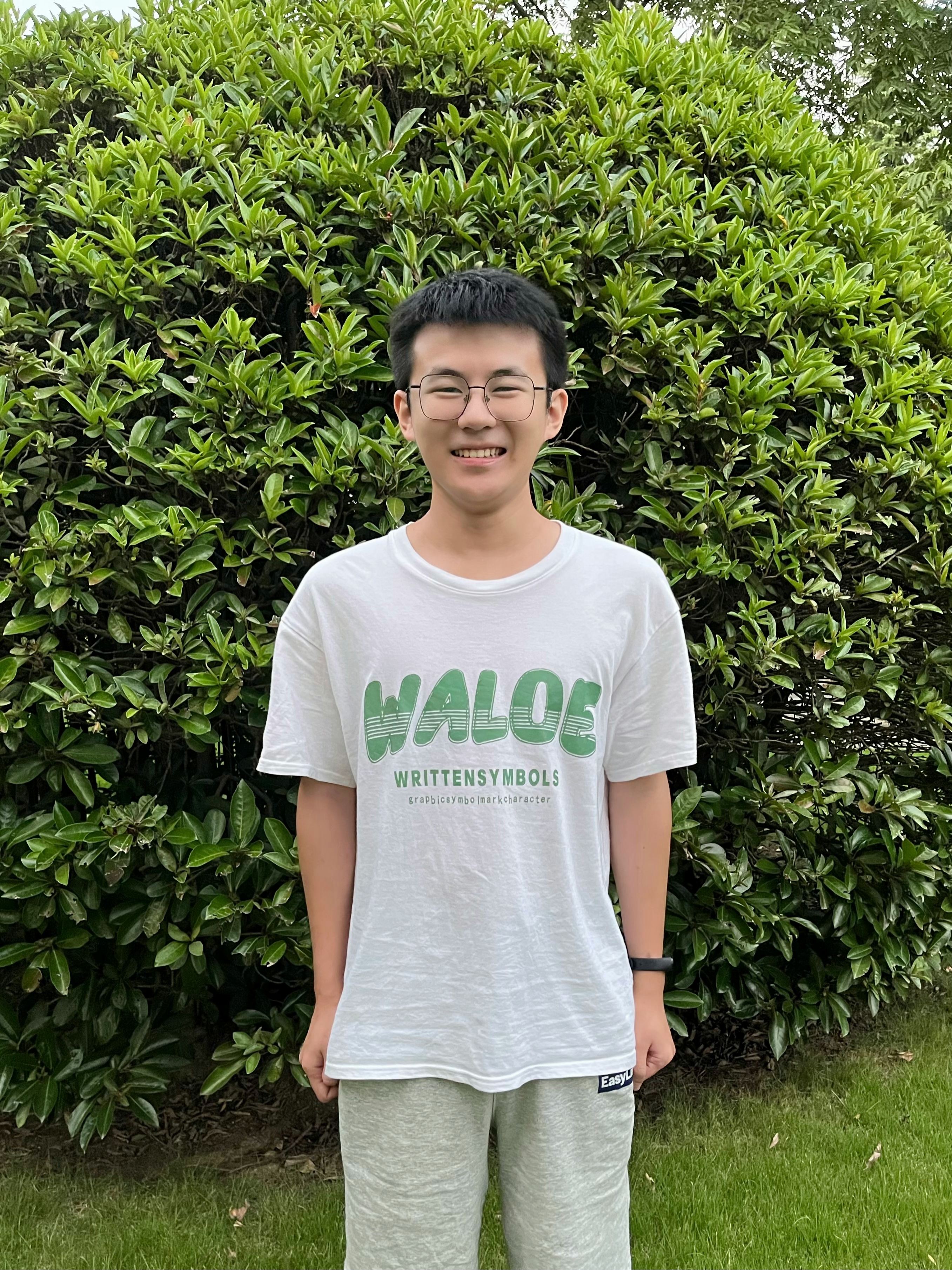
Li Ziming is a male student who pursued his undergraduate degree in Software Engineering (Software Development) at Shandong Jianzhu University. He is currently studying as a master's student in the field of Computer Science and Technology at Shanghai University. He has an outgoing personality, an active mind, and a positive outlook on life. In his daily life, he enjoys listening to music and watching movies. Throughout his graduate studies, he hopes to broaden his horizons, make new friends, and enhance his academic abilities through learning and practical experiences.
Xu Tianyang is a male student who pursued his undergraduate degree at Changzhou University and is currently a master's student in the field of Computer Science and Technology at Shanghai University. He is an optimistic and brave INFJ personality type who loves life. His hobbies include music, movies, and fitness, and he can play the guitar a little. When it comes to work, he is focused and serious, enjoys delving into topics, and occasionally has some whimsical ideas. The journey of scientific research is filled with challenges, making the path of learning all the more meaningful.
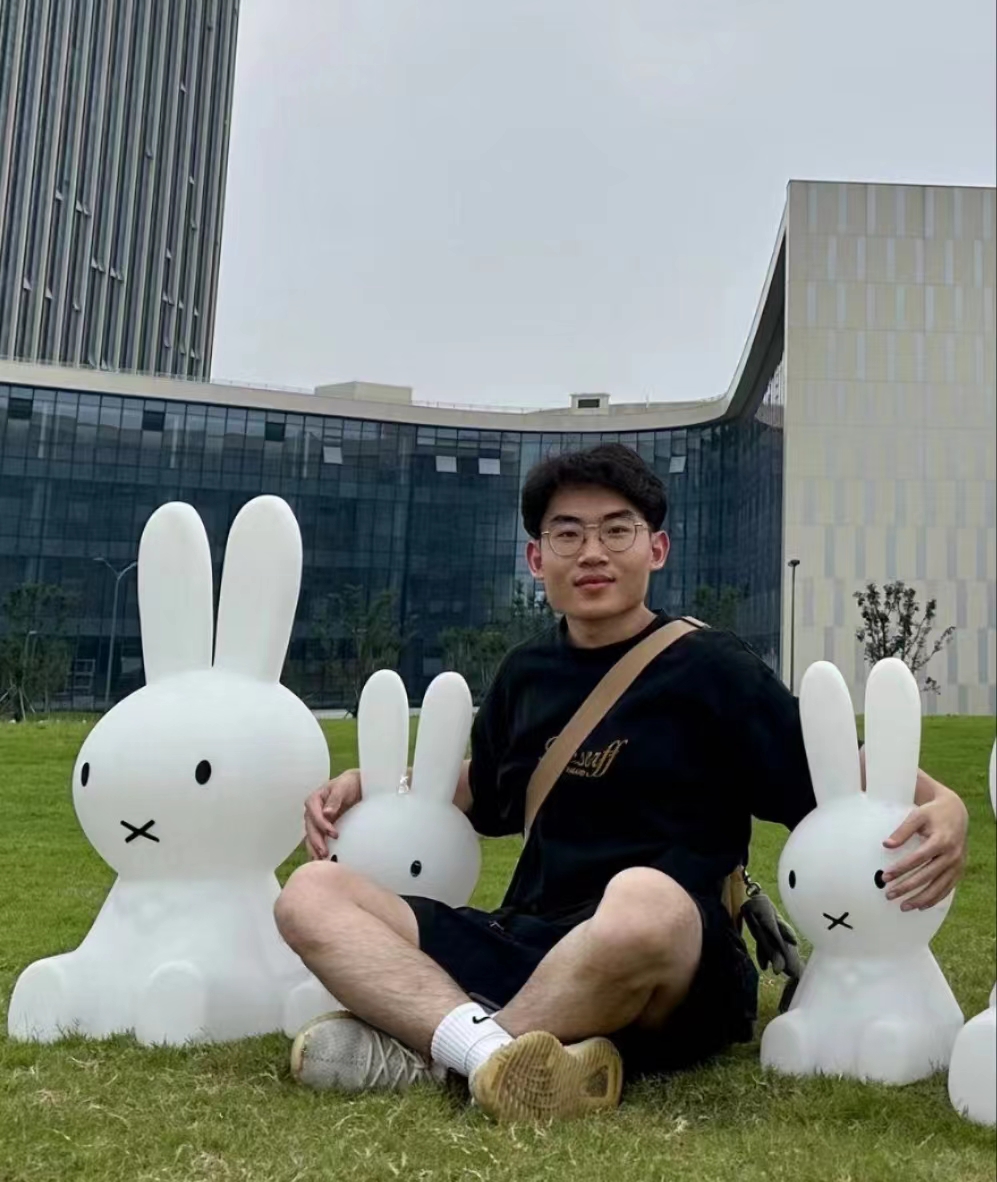
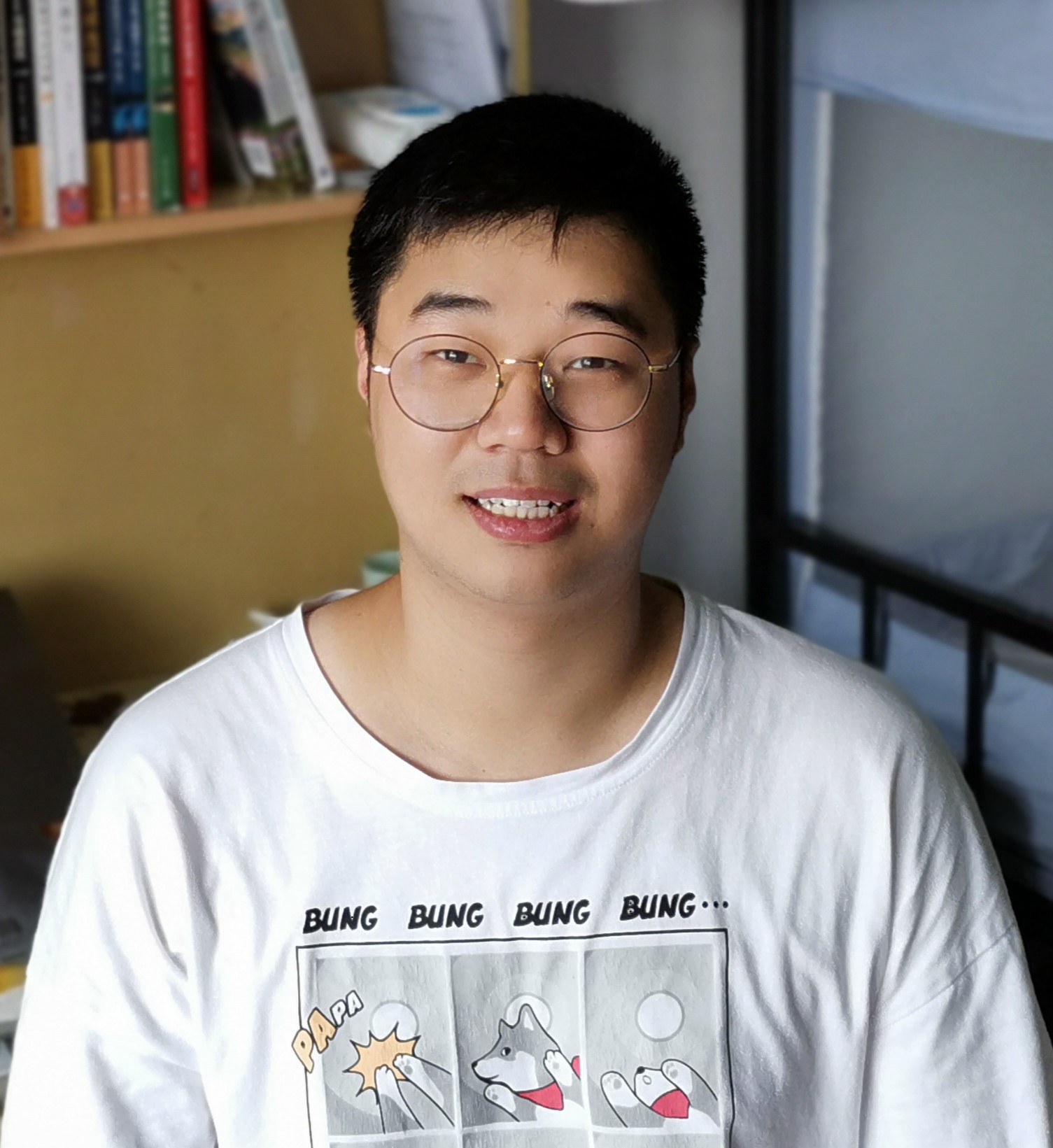
Li Ruijie graduated with a bachelor's degree from the School of Computer Engineering and Science at Shanghai University. Currently, he is a graduate student in the field of Electronic Information at the same institution. He is friendly, outgoing, and responsible. He enjoys engaging in various activities that provide an escape from reality and yet bring him back to it, such as playing games, listening to music, and cycling. He has a strong interest in various computer-related academic and practical problems. During his master's studies, he hopes to enhance his academic level and professional skills, and grow together with fellow classmates and seniors.
Our team has published a paper titled “Microstructural evolution and coarsening behavior of the precipitates in 2205 duplex stainless steel aged at 850℃” in the international journal “Journal of Materials Research and Technology” (IF: 6.4, SCI Q1 top). The first affiliation of this paper is the School of Computer Engineering and Science at Shanghai University, with Han Yuexing as the first author and Chi Rutin as the second author. Professor Liu Wei from the Institute of Materials Genome Engineering provided considerable support and assistance. Associate Professor Han Yuexing and Professor He Yanlin from the School of Materials Science and Engineering are the corresponding authors of the paper.

The formation of secondary phases in 2205 duplex stainless steel (DSS) has a significant impact on its mechanical properties. The study of the microstructural evolution and coarsening behavior of precipitates in 2205 DSS has scientific and technological significance. In the current work, the composition and morphology evolution of precipitates in 2205 DSS, coarsening for up to 200 hours at 850°C, were systematically investigated using SEM/EDS (Scanning Electron Microscope/Energy Dispersive Spectroscopy) and TEM (Transmission Electron Microscope) techniques. Additionally, deep learning and digital image processing techniques were employed to perform size statistics on the intermetallic precipitates, particularly the σ phase, based on SEM images. Based on this, the average interfacial energy between the σ phase and γ phase was reasonably estimated using the Ostwald ripening mechanism. This work provides a comprehensive understanding of the microstructural evolution and coarsening behavior of precipitates in 2205 DSS.
Essay: Material structure segmentation method based on graph attention
Our code and paper are both publicly available at: https://github.com/han-yuexing/Roughening-Behavior
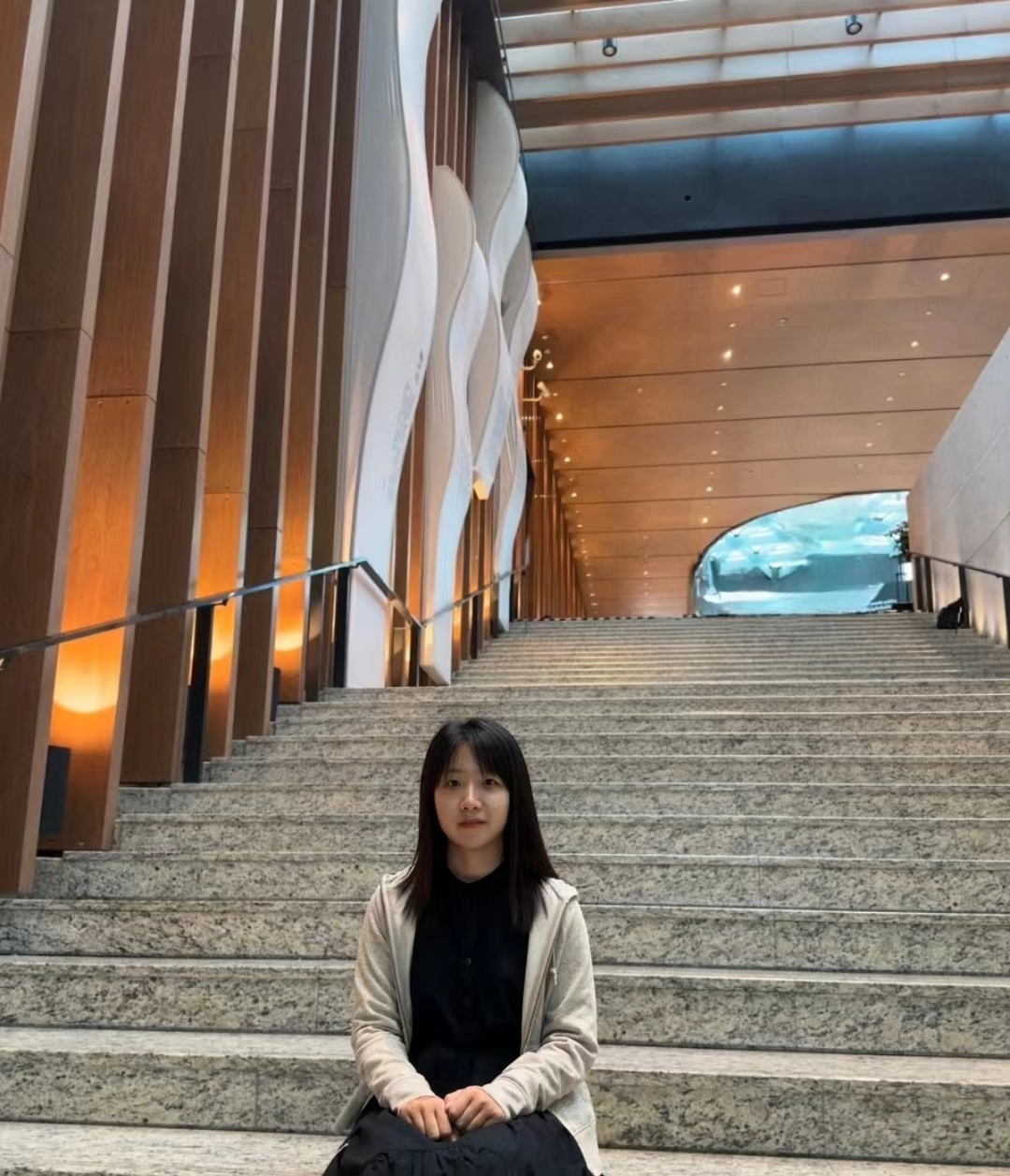
Shanghai University welcomed back four graduate students from the Class of 2020, Wang Yinggang, Liu Yuhong, Xia Jinhua, and Li Ruiqi, who revisited their alma mater to relive their past campus life and engage in discussions with their former advisor, Professor Han Yuexing. During this trip back to the university, they shared their experiences and reflections from their work and personal lives, expressing their deep affection and love for their alma mater. The recent graduates couldn’t help but be overwhelmed with emotions upon returning to the campus that witnessed their growth and transformations. They were filled with gratitude and cherishment for everything the university provided them.
During their interactions with their former advisor, Professor Han, the three graduate students shared some of their experiences and reflections from their work and personal lives. They believed that their time as graduate students equipped them with more confidence and independence, laying a solid foundation for their professional careers. They also expressed their gratitude and respect for their advisor, acknowledging the important role their guidance and assistance played in their growth and development.
This return trip to the university allowed the four graduate students to once again experience the charm and mission of their alma mater, deepening their appreciation and concern for its development and progress. They expressed their commitment to constantly support and follow the development and progress of their alma mater, regardless of where they are, and to contribute to the university and society in their own ways.
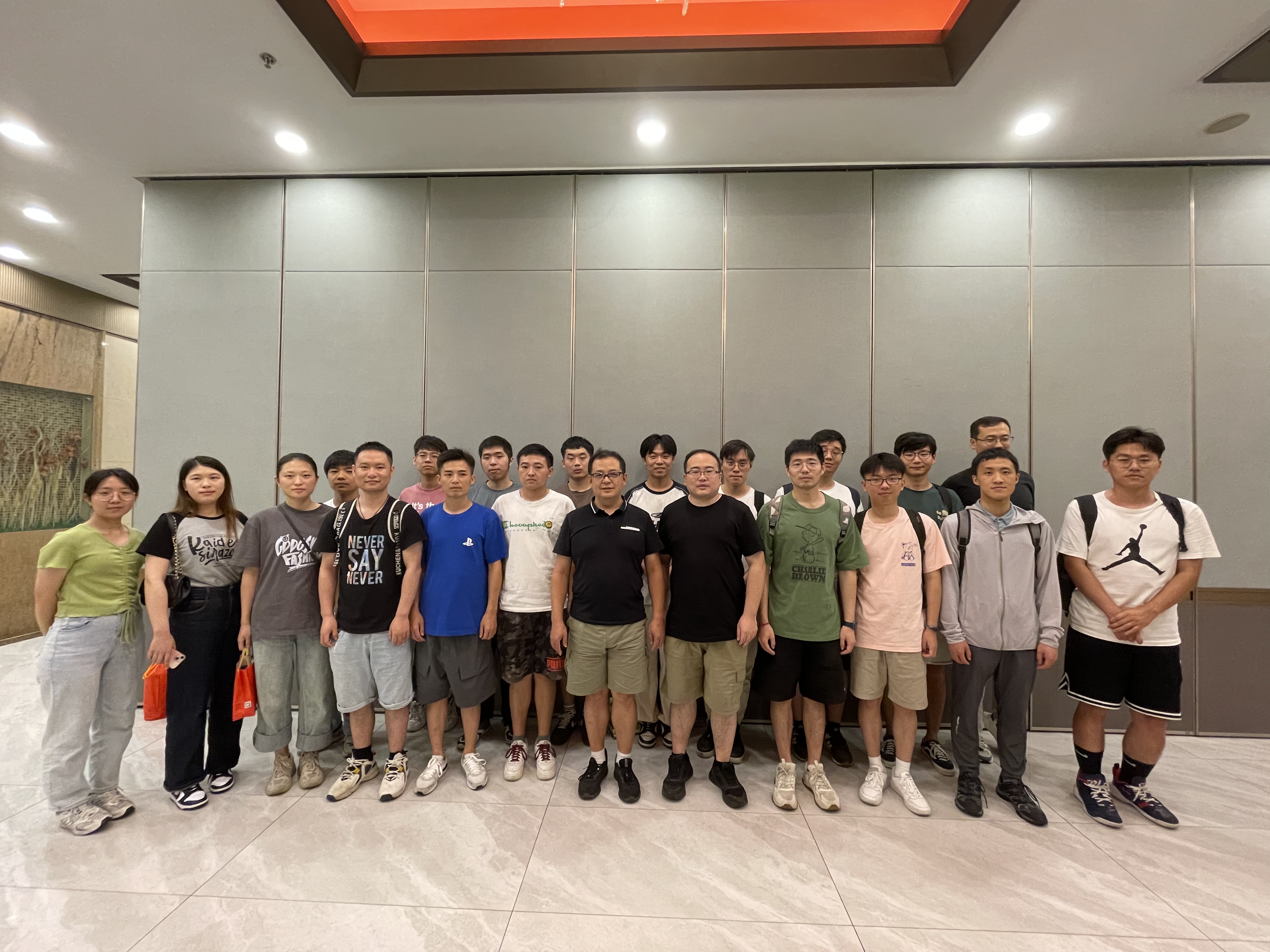
Congratulations to Huang Ziang, Yao Zhiyuan, Wu Zeming, Ge Jiahao, He Weiqi, Wu Wenjie, Xu Tianyu, and Wang Yingyao on successfully graduating from Shanghai University, majoring in Computer Science and Technology! It’s wonderful to hear that your undergraduate studies have come to a successful conclusion. Additionally, it’s great to know that your graduation projects were guided by Professor Han. Best wishes to all of you as you embark on the next chapter of your lives!
Huang Ziang’s graduation project focused on the research and development of a material image database system platform. The goal was to construct a system platform that enables data uploading, data querying, and algorithm usage. This platform provides a user-friendly front-end interface for accessing and manipulating data, as well as a back-end system for data storage, querying, and algorithm invocation. The ultimate objective was to accomplish tasks such as retrieving and processing key data from individual or batch material images.
Yao Zhiyuan’s graduation project focused on the research and development of a material literature database system platform. The objective was to achieve tasks such as retrieving and processing key data from individual or batch material literature. The project aimed to develop a system platform that enables efficient searching, retrieval, and manipulation of material literature data, empowering users to access and analyze relevant information effectively.
Wu Zeming’s graduation project focused on the research and development of a street environment governance assessment system based on video processing. The project utilized deep learning algorithms for video processing and image processing research to construct the street environment governance assessment system. The system provided evaluation scores for assessing the effectiveness of street environment governance.
Ge Jiahao’s graduation project focused on the research of methods for integrating key content from different videos. The project was based on video processing and aimed to segment key objects from one video and project the visual representation of these key objects onto another video. This process enabled the fusion of content from different videos, resulting in a seamless integration of visual elements.
He Weiqi’s graduation project focused on the construction and development of a carbon fiber reinforced polymer composite material database. Considering the complexity of various data associated with carbon fiber reinforced polymer composites, efficient management was required. Given the data template, the project aimed to accomplish the construction and development of a carbon fiber reinforced polymer composite material database.
Wu Wenjie’s graduation project focused on the research of grain shape extraction and statistical methods for microstructure images of copper alloys. Taking widely used copper alloys in the electronics industry as an example, the project aimed to develop algorithms based on material image segmentation and recognition. These algorithms were used to extract quantitative descriptive features from alloy microstructure images and correlate them with mechanical and electrical properties. The project laid the foundation for performance prediction and design based on alloy material microstructure.
Xu Tianyu’s graduation project focused on the research and development of constructing an academic literature knowledge graph. The project aimed to design a tool that utilizes techniques from the field of natural language processing and machine learning algorithms. This tool would be able to automatically extract knowledge from academic literature, generate a knowledge graph, and visualize it for display purposes.
Wang Yingyao’s graduation project focused on the development of a high-concurrency memory pool in C++. The project aimed to create a high-concurrency memory pool based on the prototype of Google’s open-source project, tcmalloc. The core framework was simplified and a simplified version of the high-concurrency memory pool was simulated and implemented.
Wang Yinggang graduated from Huaqiao University with a Bachelor’s degree in Electrical Engineering and Automation. In the autumn of 2020, he enrolled in the Software Engineering professional master’s program at the School of Computer Science, Shanghai University. After joining the research group, under the guidance of Professor Chen Qiaochuan, Professor Han Yuexing, and Professor Zhang Rui, he focused on studying curve information processing methods in scientific literature. With their careful guidance, he successfully completed the following research projects:
-
Firstly, this paper explores the automatic extraction of curve information from curve coordinate data commonly found in current scientific literature, addressing the challenges and time-consuming nature of manual extraction. Curve images often exhibit diverse plotting styles, high density, and strong continuity, resulting in inaccurate curve extraction with different methods. This paper proposes an end-to-end curve extraction model based on dense network architecture to address issues such as cluttered and blurred curve lines generated by curve detection methods, aiming to improve the accuracy of curve information extraction. By incorporating adaptive dilated convolution modules to enlarge the receptive field and introducing progressive refinement pathways at each layer, with intermediate outputs being fed into subsequent refinement modules, the network performance is optimized through carefully designed loss function parameters. Additionally, a dedicated dataset for curve detection is constructed, and the improved model is trained to further enhance the ability of the network to extract curve edge information from curve images. The qualitative evaluation results further demonstrate the superiority of this method compared to others.
-
Furthermore, to address the issues of excessive stacking of dense convolution modules leading to loss of channel feature information, a large number of trainable parameters, and longer training and inference times, this paper proposes a curve extraction network structure based on a dual efficient channel attention mechanism. This method utilizes Vgg as the backbone feature extraction network and employs a dual efficient channel attention mechanism to represent the weights of different channel features, better capturing the relationships between channels in the image and enhancing the ability of feature representation. Subsequently, an embedded stage feature fusion module is introduced to reduce feature loss and enhance feature expression. By fusing low-resolution and high-resolution features from different stages, the model gains a better understanding of the semantic information in the image, while significantly reducing the number of model parameters. Training and testing on a curve dataset demonstrate that the proposed method extracts curve structures with clear contours, well-defined hierarchy, and accurate localization. It effectively addresses the issue of blurred curve boundaries and achieves improved curve extraction accuracy with fewer parameters.
-
Lastly, the complexity and implementation difficulty of curve data extraction algorithms often limit their application scope. Therefore, the development of user-friendly data extraction software can popularize and facilitate curve data extraction, further promoting its practical application. This paper focuses on the practical value of curve data extraction and develops a desktop data extraction software to facilitate the implementation of the algorithm. This software allows more people to benefit from the practical value of curve data extraction and promotes its widespread application in various fields.
After graduating, Wang Yinggang joined JD.com Retail Group and engaged in backend software development. During his time as a graduate student at Shanghai University, he worked hard to enhance his professional knowledge and research capabilities, and he benefited greatly from excellent mentors and supportive friends. With his original aspiration and a sense of mission, he will forge ahead and contribute his wisdom and strength to the development of JD.com. We believe that he will become an outstanding professional in the industry and continue to make remarkable achievements.
Essay: Research on curve information processing methods in scientific literature
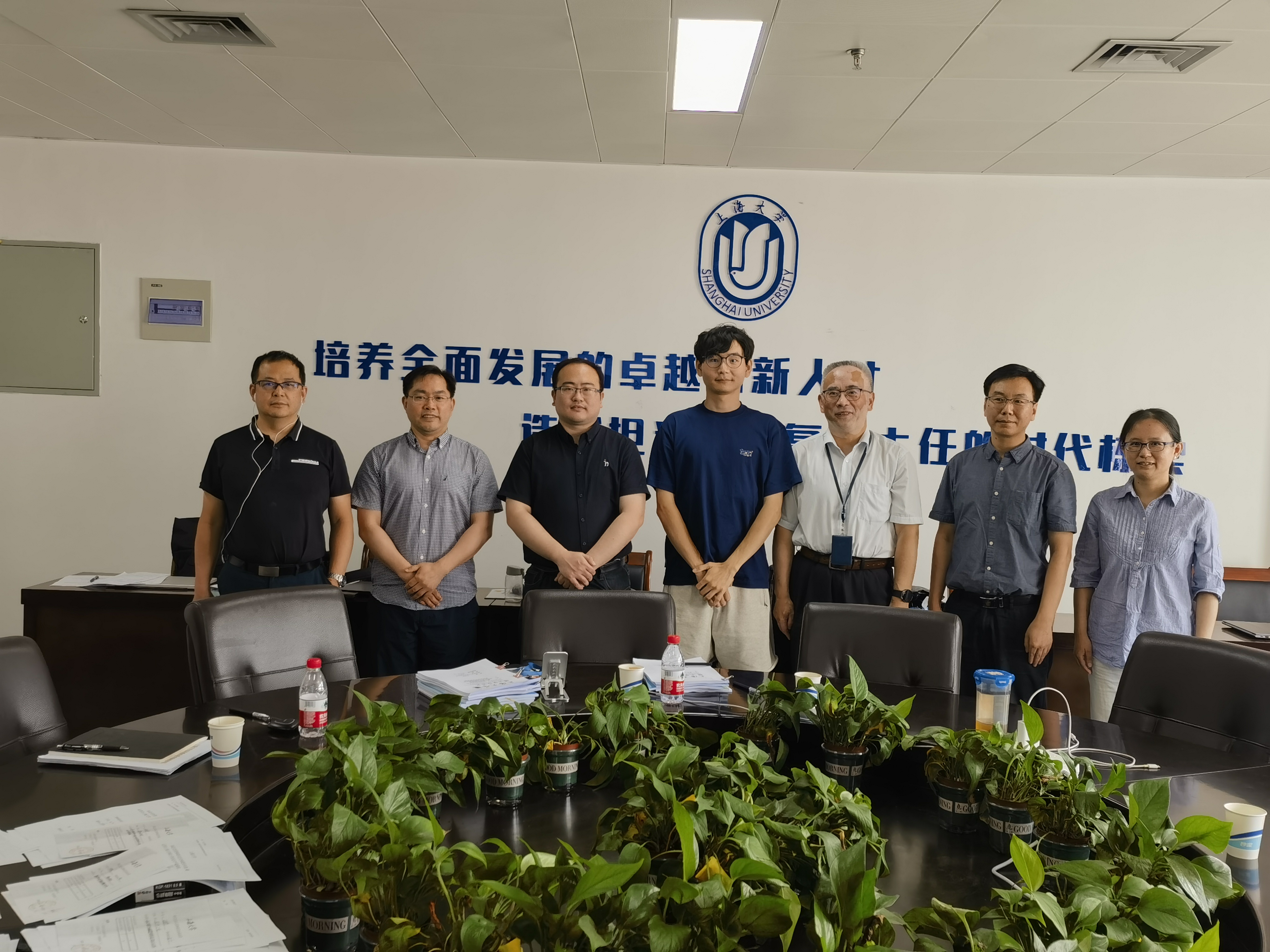
Zhang Jiawang graduated from Nanjing University of Information Science and Technology with a bachelor’s degree. He began pursuing a professional master’s degree in computer engineering and science at the School of Computer Engineering and Science, Shanghai University in 2020. After joining the research group, he worked under the guidance of Professors Zhang Rui, Han Yuexing, and Chen Qiaochuan to study material literature information mining methods. With their careful guidance, he completed the following research:
-
A context-aware literature information extraction method is proposed based on the expression characteristics of material literature texts and the structural features of component tables, which mines both text and table information. Named entity recognition (NER) technology is used to mine material texts by fusing dynamic word vectors with static word vectors in the material field, so that each word vector contains contextual information and material domain knowledge, significantly improving the NER effect of material texts. Experiments were conducted on NER datasets of stainless steel materials and inorganic materials.
-
A material performance prediction method based on literature information extraction is proposed to predict the tensile strength and material composition data obtained from the context of material literature. The method utilizes the XenonPy materials informatics library to expand the feature space of the composition data. Based on the expansion principle, a cross-feature compression and feature selection method is designed to screen for statistically significant element-level features and tensile strength data. Machine learning is then used to train the prediction model on these data. The experiment uses data published by the National Institute for Materials Science in Japan, and the results show that the proposed composition feature processing method can significantly improve the prediction performance of the model.
-
Using stainless steel as a demonstration material, the proposed literature mining and performance prediction methods are applied to 11,058 scientific literature on stainless steel. 2.36 million material entities were extracted from the literature texts, and 7,970 sets of material composition information were extracted from the literature tables. Relevant data were selected, and numerical prediction was performed on the tensile strength. The change trends of corrosion resistance, ductility, strength, and hardness were also predicted.
After graduation, Zhang Jiawang joined Huawei Shanghai Research Institute to engage in software development-related work. During his three-year graduate career at Shanghai University, Zhang Jiawang worked hard to enhance his professional knowledge and research abilities. He was fortunate to have met many excellent mentors and friends. We hope that Zhang Jiawang will always remember his original aspirations and mission, overcome all obstacles, and forge ahead on his future path.
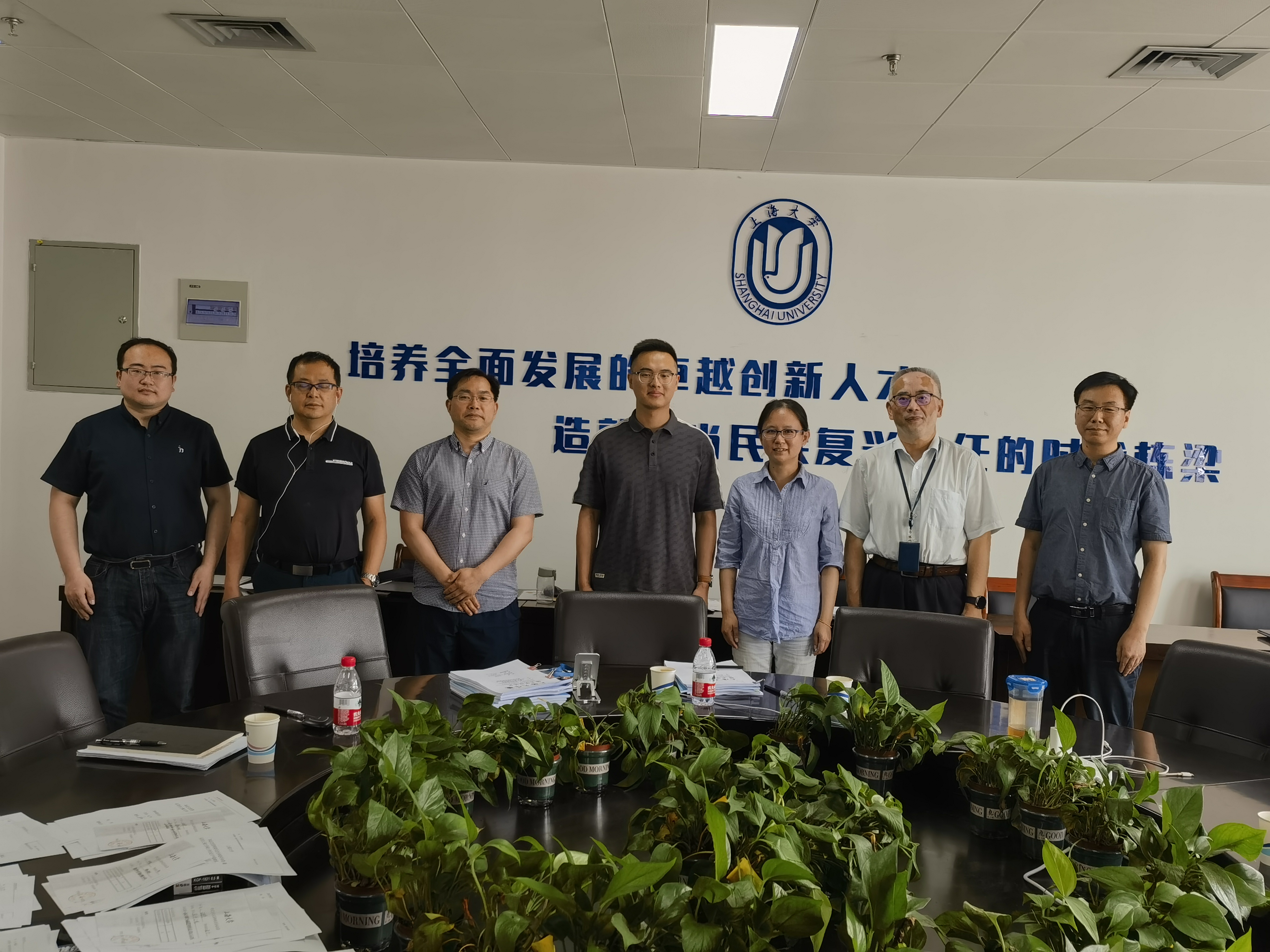
Liu Yuhong graduated from Anhui University of Traditional Chinese Medicine with a Bachelor’s degree. In September 2020, she began her master’s studies at the School of Computer Engineering and Science, Shanghai University. After joining the research group, she followed the guidance of Professor Han Yuexing to learn about material image processing and material image enhancement technologies and their applications. With the careful guidance of Professor Han, she completed the following research:
-
She proposed an image enhancement-based method for recognizing the morphology characteristics of thermal barrier coatings. The method consists of three steps: enhancement of pore contours and image denoising, pore removal and crack repair, and crack recognition and length calculation. It can successfully identify cracks in thermal barrier coatings. Additionally, the reasonable use of image filtering and mathematical morphology enhancement methods ensures high integrity and low deviation in crack recognition in thermal barrier coatings. The proposed method can automatically identify cracks in thermal barrier coatings and calculate their lengths. Compared to manual detection, this method provides more precise crack recognition and faster crack length calculation, providing effective assistance to material science researchers in analyzing the microstructure of thermal barrier coatings conveniently and efficiently.
-
She designed two software programs for identifying the morphology characteristics of thermal barrier coatings. One software program achieves thermal barrier coating image enhancement and crack skeleton extraction, while the other software program achieves crack recognition and length calculation. The combination of both software programs further improves the speed of analyzing the microstructure of thermal barrier coatings, reducing time and labor costs. Moreover, the software can also process other material images similar to thermal barrier coating images, promoting the research and development of material science.
-
She proposed a method for material image data augmentation using an improved HP-VAE-GAN. The improved HP-VAE-GAN uses a CBAM module to refine feature mapping and improve the network’s feature representation ability. Meanwhile, an additional convolutional block was added to the encoder network to further improve the network’s feature extraction ability and eliminate the impact of CBAM insertion on model performance. The generated results show that the proposed HP-VAE-GAN with the CBAM attention mechanism can effectively improve the quality of generated images. The results of classification experiments show that this method achieves better results than using HP-VAE-GAN for data augmentation, providing a new data augmentation approach for small sample material image datasets.
After graduating, Liu Yuhong became a teacher of Artificial Intelligence at Shanghai Zhenhua Vocational School. Throughout her three years of graduate studies at Shanghai University, Liu Yuhong worked hard to enhance her professional knowledge and research abilities. She had the privilege of meeting many excellent mentors and friends. We hope that Liu Yuhong will always remember her original aspirations and mission, overcome challenges, and forge ahead on her future path with determination.
Essay: Research on Enhancement Methods for Small Sample Material Images

Xia Jinhua graduated with a Bachelor’s degree from Jiangsu University of Science and Technology. In 2020, Xia Jinhua began pursuing a professional master’s degree at the School of Computer Engineering and Science, Shanghai University. Under the guidance of Professor Han Yuexing, Xia Jinhua conducted research on material literature information mining methods and successfully completed the following studies:
-
Extraction of Numerical Chart Information: A combined image and text-based literature mining method was proposed for extracting information from numerical charts along with their corresponding titles. The method involves several steps. Firstly, Yolov5s is utilized to extract individual numerical chart images from scientific literature, and an improved scientific literature image detection method is employed to enhance accuracy. Next, the PDFminer tool is used to parse the textual content from the scientific literature. The cosine similarity and Jaccard similarity between sentences are calculated to match the textual titles corresponding to the numerical charts. The Sci-Bert model and CRF algorithm are then applied to identify axis names in the titles. Additionally, techniques such as morphological operations and character recognition are used to extract specific data information from the numerical chart images. Finally, the extracted axis names and data are integrated to obtain complete numerical chart information.
-
In order to address the low accuracy issue in recognizing axis names of numerical charts mentioned above, this study focuses on the relationship between numerical chart images and text in scientific literature and proposes a method to improve recognition performance. The method starts by identifying label text on the numerical chart image and filling it into a sample template to generate unlabeled text data, effectively achieving data augmentation. Additionally, text similarity matching techniques are employed to search for corresponding statements describing the numerical charts in the body of the scientific literature. These statements are then concatenated with the title text to expand the textual context, improving the vector representation of the generated input sentences. This optimization aims to enhance the predictive performance of the model.
After graduating, Xia Jinhua joined Hangzhou Guangli Microelectronics Company and engaged in software development-related work. Throughout Xia Jinhua’s three-year graduate studies at Shanghai University, they diligently pursued learning, continuously enhancing their professional knowledge and research presentation skills. Xia Jinhua had the privilege of meeting many excellent mentors and friends. We hope that Xia Jinhua will always remember their original aspirations and mission, overcome challenges, and forge ahead on their future path with determination.
Essay: Research on Context-Aware Information Mining of Image and Text in Material Science Literature
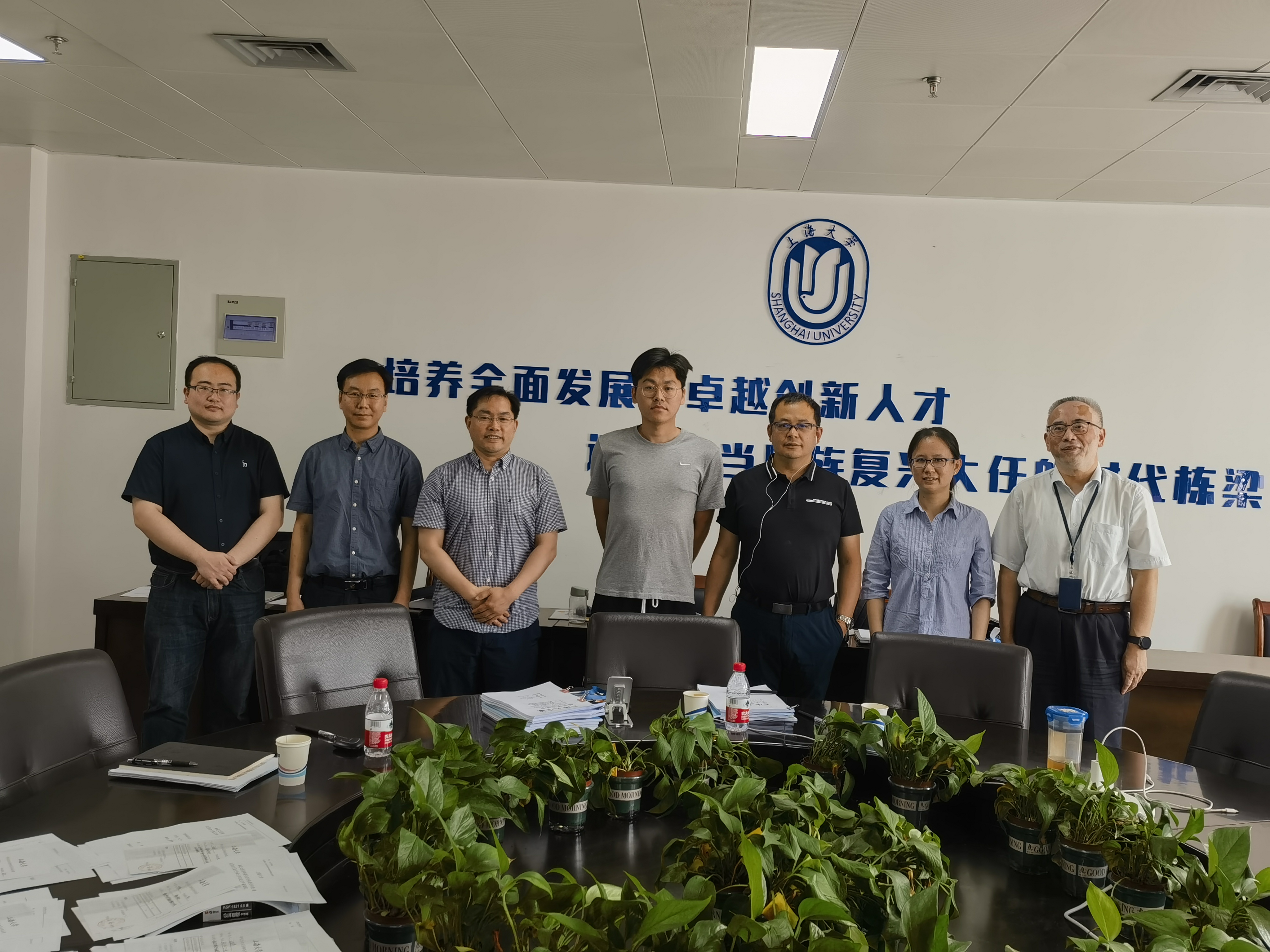
That’s a great achievement! Congratulations on the publication of your paper titled “Material Structure Segmentation Method Based on Graph Attention” in the international journal “Materials Today Communications” (IF: 3.662). The School of Computer Engineering and Science at Shanghai University is listed as the first affiliation, with Chen Qiaochuan as the first author, Wei Huishan as the second author, and Associate Professor Han Yuexing as the corresponding author.
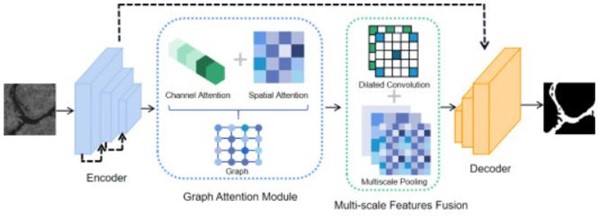
With the development and integration of multiple disciplines, the fusion of computer vision and materials science has greatly transformed conventional material research methods. Existing methods can effectively segment images of specific scenes, but there is no universal approach to accurately segment and analyze material images. To address the challenges of complex textures, blurry boundaries, and low contrast in material images, we propose a method that relies on multi-dimensional feature fusion to more effectively train networks with limited and available annotated samples. This architecture consists of an encoder, graph attention module, multi-scale feature fusion module, and decoder. We demonstrate that such a network can be trained end-to-end from images. In electron microscopy images, the segmentation results outperform many previous state-of-the-art methods. With this approach, we can accurately identify multiple structures in material images, providing valuable insights for multi-stage segmentation of material images and exploring new mechanisms for structural transformations in materials science.

Essay: Material structure segmentation method based on graph attention
Li Ruiqi graduated with a Bachelor’s degree from Shanghai University and began pursuing an academic master’s degree at the School of Computer Engineering and Science, Shanghai University, in 2020. Starting from the final year of their undergraduate studies, Li Ruiqi joined the research group led by Professor Han Yuexing to study material image processing techniques and applications. Under the careful guidance of Professor Han, Li Ruiqi continued and advanced the following research studies:
-
Automated Detection of Chirikov Patterns. The structure and orientation information of crystals can be obtained by analyzing the Electron Backscatter Diffraction (EBSD) patterns, which are acquired through EBSD devices. The reliability and accuracy of the obtained information depend on the precise localization of EBSD pattern bands and intersection points. In this research, a method is proposed that combines Radon transform and cumulative probability Hough transform to achieve automatic localization of EBSD patterns (Chirikov bands) and intersection points. Experimental results demonstrate that this method is robust and capable of detecting more accurate Chirikov bands and intersection points.
-
To address the challenge of balancing annotation cost and segmentation accuracy in material image segmentation tasks and achieve real-time segmentation models, a material image segmentation algorithm based on interactive drawing annotation and machine learning is designed. The primary objective of this method is to obtain segmentation models in real-time. It involves extracting neighborhood features around the center points of material images and performing multiple rounds of interactive drawing annotation. An incremental learning approach is utilized to train the final image segmentation model. This approach enables the model to continuously improve and adapt to new data while minimizing the annotation effort required.
-
To achieve high-precision segmentation models based on limited and easily accessible annotated data, a weakly supervised deep learning method for material image segmentation is designed, which relies on pseudo-labeling. The objective of this method is to obtain optimal segmentation results based on limited annotated data. A novel dual-branch network architecture is designed, and a new context feature discrepancy supervision loss is proposed to generate pseudo-labels. This allows the model to achieve high segmentation accuracy using only training images annotated with scribbles. This method addresses the challenges of small sample sizes, annotation difficulties, and resource wastage during testing in deep learning neural networks for material image segmentation tasks.
-
Due to the rapid nature of phase transformations and the complex morphology of lamellar martensite, traditional studies based on martensite images struggle to provide sufficient information during the phase transformation process. In this research, a novel video processing method is proposed to extract and analyze information data from videos depicting the transformation of lamellar martensite. The analysis of image data provides the following dynamic information about the transformation of lamellar martensite: the number of transformations, maximum length, maximum width, average length, average width, area, and category orientation. This study breaks the limitations of studying martensite based on static images and comprehensively describes various data and information related to the dynamic transformation of martensite.
After graduating, Li Ruiqi joined Lianying Intelligent to engage in software development-related work. Throughout Li Ruiqi’s three-year graduate studies at Shanghai University, they diligently pursued learning, continuously enhancing their professional knowledge and research presentation skills. Li Ruiqi had the privilege of meeting many excellent mentors and friends. We hope that Li Ruiqi will always remember their original aspirations and mission, overcome challenges, and forge ahead on their future path with determination.

Former graduate students Wei Huishan, Zhang Hongkun, and Yang Shen returned to their alma mater, Shanghai University, on March 18th. They revisited their past campus life and had meaningful exchanges with their former mentor, Professor Han Yuexing. During this trip back to school, they shared their experiences and reflections on their work and personal lives, expressing deep affection and love for their alma mater. The reunion on campus evoked a multitude of emotions for the three students. Being back here gave them a sense of coming home, as this campus witnessed their growth and transformation. Everything here filled them with gratitude and appreciation. During their conversation with Professor Han, the three graduate students shared their experiences and feelings regarding their work and personal lives. They believed that their university years equipped them with confidence and independence, laying a solid foundation for their careers. They also expressed gratitude and respect for their mentor, acknowledging the irreplaceable role their guidance and support played in their growth and development. The return to campus reminded the three graduate students of the charm and mission of their alma mater, instilling in them a renewed sense of appreciation and concern for its progress and development. They conveyed their commitment to continuously support and contribute to the advancement of their alma mater and society, regardless of their current locations.

